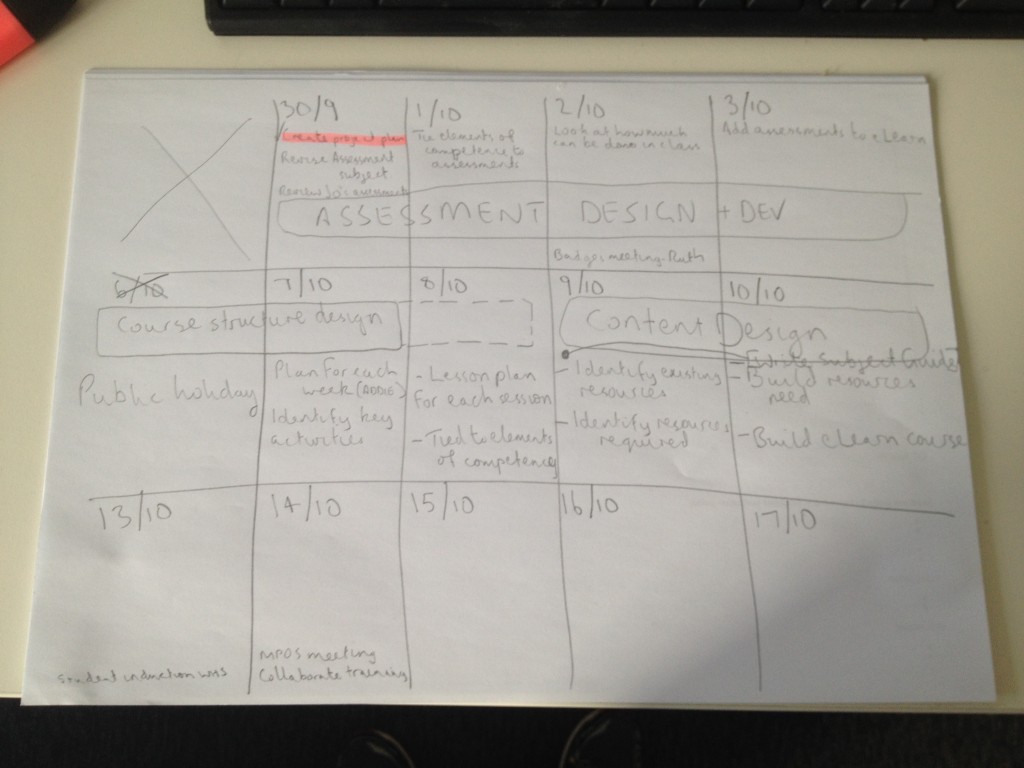In three weeks time (Friday 17/10) I’ll start teaching the Design and Develop Learning Resources (DDLR) and Design and Develop eLearning Resources (DDeLR) subjects for the Diploma of Vocational Education and Training. (Dip VET)
It’s been ten years since I last taught a formal subject. (But I’ve run a bucket-load of workshops and provided a lot of 1-1 training and support in that time)
I thought it might be a useful process to document my process as I continue to design and develop this course over the next three weeks. Obviously I’ve already spent a fair amount of time looking over the units of competency (linked above) – the holy documents within VET that define exactly what a learner needs to be able to demonstrate at the end of the course. These also outline the types of evidence that can be used to demonstrate competency and provide additional information about suggestions about interpreting the elements that make up the units of competency.
(As a side note, I know a number of people in Higher Education – the university sector – that shudder when they hear competency mentioned but it has been interesting to note how frequently it does seem to be coming up in discussions of the future of adult learning lately)
I’ve also spent a decent amount of time looking over the courses designed and delivered by my colleagues and dug down into the approaches that they have taken – as well as having long chats with them and other people on my team. (The logical thing to do would be to just tweak and re-deliver their old course but where’s the fun in that?)
There is also a practical consideration in refreshing my own course design and development skills. I have even toyed with the idea of trying to gamify the entire course but that seems unnecessarily over-ambitious. Maybe next year, when I have a better sense of how this subject runs in a conventional form.
So I started by blocking out exactly what it is that I need to accomplish in these three weeks. (Clearly other things will arise that will take priority but it is currently holidays so I have two weeks – boss free also – to get stuck into things like this with hopefully minimal disturbance) The final week is left free for feedback, editing and contingencies.

As with all good lists, the first item is to make the list. Nice to get a quick win on the board. From there it seemed prudent to revisit the subject I recently took as a student about assessment for some inspiration and that has given me some handy tools and processes that I might have eventually arrived at myself but not nearly as quickly. Once I’ve designed the assessments I think I’ll come back to this to make sure I haven’t missed anything vital.
Ensuring that the assessments are targeted at the appropriate Australian Qualifications Framework (AQF) level – 5 in this instance – and that every element of both the units of competency are addressed are the key factors here.
Taking another look at the assessments that the previous teacher of this subject – Jo – designed comes next. She’s run this subject four times now and so has had a good opportunity to refine her assessment tools. Being part of the Education Design and Technology team, we all maintain high quality online courses and Jo has invited me to make use of anything I find in her courses. (Thanks Jo – with four courses and subject guides to pore over, I might be some time)
